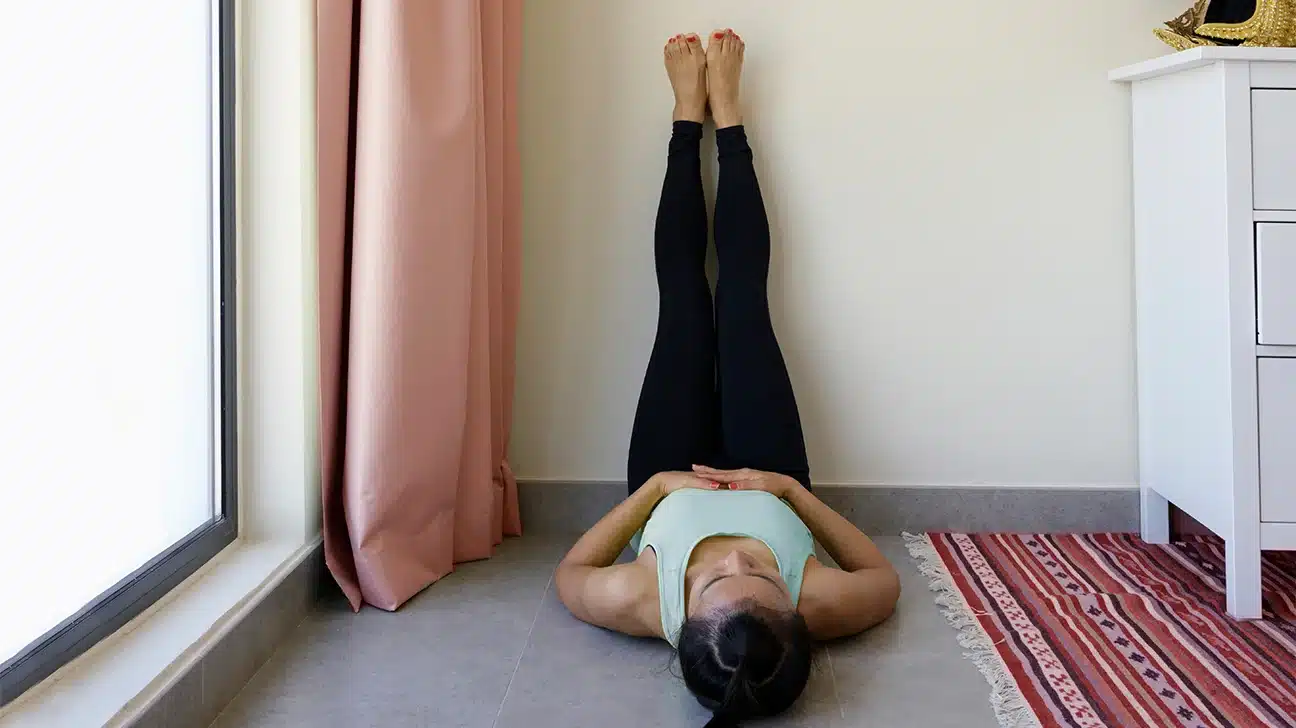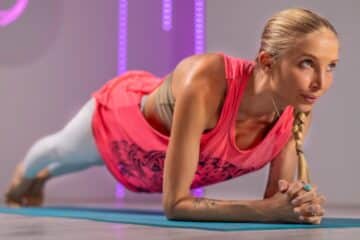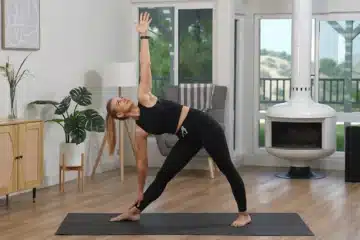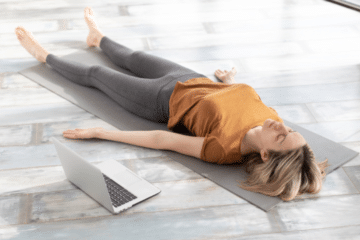Supported Legs-Up-the-Wall Twist is a soothing and rejuvenating yoga pose that combines the benefits of both Legs-Up-the-Wall Pose (Viparita Karani) and Spinal Twist.
By providing support to the body and gently twisting the spine, this pose offers a unique opportunity for deep relaxation and release.
In this article, we’ll delve into the technique, benefits, and variations of Supported Legs-Up-the-Wall Twist, as well as how it can enhance your yoga practice.
Technique
To practice Supported Legs-Up-the-Wall Twist, begin by placing a bolster or a stack of blankets perpendicular to a wall. Sit sideways with your hip touching the wall and your knees bent, then gently lie back and swing your legs up the wall.
Shift your hips closer to the wall until your legs are fully supported. Extend your arms out to the sides in a T position, palms facing up.
On an exhale, allow both knees to fall to one side, maintaining contact with the wall and keeping your shoulders grounded.
Turn your head to the opposite direction for a deeper twist if comfortable, or keep it facing up for a more neutral position. Close your eyes and breathe deeply, allowing your body to relax into the twist.
Benefits:
- Spinal Mobility: Supported Legs-Up-the-Wall Twist gently stretches and twists the muscles along the spine, improving spinal mobility and flexibility.
- Hip Opening: This pose also helps release tension in the hips and groin, promoting greater flexibility and range of motion.
- Relaxation: The supported nature of this pose induces a state of deep relaxation, calming the nervous system and reducing stress and anxiety.
- Legs-Up-the-Wall Benefits: By combining a twist with the inversion of Legs-Up-the-Wall Pose, this variation enhances circulation, relieves swelling in the legs and feet, and promotes relaxation.
- Digestive Aid: The twisting motion of Supported Legs-Up-the-Wall Twist can stimulate digestion and aid in the relief of digestive discomfort.
Variations:
- Arm Variation: Instead of extending your arms out to the sides, you can place one hand on your belly and the other hand on your top thigh, gently guiding the twist and deepening the stretch.
- Bent Knee Variation: If extending both legs straight is uncomfortable, you can keep the top knee bent and place a bolster or blanket between the knees for support.
Conclusion
Supported Legs-Up-the-Wall Twist is a valuable addition to any yoga practice, offering a myriad of benefits for both physical and mental well-being.
By incorporating this pose into your routine, you can experience increased relaxation, improved flexibility, and a greater sense of overall balance.
Whether you’re looking to unwind after a long day or enhance your spinal health, Supported Legs-Up-the-Wall Twist provides a gentle and effective way to nourish body and mind.



